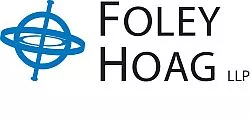- within Media, Telecoms, IT and Entertainment topic(s)
On November 4, 2024, in the Public Service Commission
("PSC")'s large-scale renewables and Clean Energy
Standard docket ("Case 15-E-0302"), the New York State
Department of Public Service ("DPS") filed a document
proposing interpretations of key terms in the State's landmark
2019 climate law, the Climate Leadership and Community Protection
Act ("CLCPA") (the "DPS Proposal").
The document focuses on the language in the CLCPA, which directs
the PSC to establish a program pursuant to which the
"statewide electrical demand system will be zero
emissions" by 2040. Neither "statewide electrical demand
system" nor "zero emissions" are expressly defined
in the CLCPA or elsewhere in the State's Public Service Law.
The DPS Proposal is significant because, if adopted, it would
establish clearly what is (and what isn't) encompassed in the
"statewide electrical demand system" and what constitutes
(and what doesn't constitute) compliance with the CLCPA's
"zero emissions" standard.
Accordingly, while DPS's proposed definitions (which we explain
below) are not surprising or landscape-altering, they will clarify
how the PSC will regard certain "edge case" resources or
emission types. For instance, generators that operate
behind-the-meter but receive compensation through the State's
Value of Distributed Energy Resources ("VDER") Program
will be included in emissions assessments. Emissions associated
with in-state generation resources will be calculated in gross,
while emissions related to power imported from out-of-state will be
netted against out-of-state emissions prevented by the export of
in-state clean power.
Comments on the proposed definitions are due by January 19,
2025.
The "statewide electrical demand
system." DPS proposes the following interpretations
concerning the term "statewide electrical demand
system":
- "System" reflects the legislature's intent not to encompass every power-generating resource in the state but only those that routinely and systematically function within the operation of the statewide electric grid;
- Imports of electricity in the state should be considered covered by the term, but limiting such imports in the interest of achieving CLCPA targets may not interfere with the Commission's duty to ensure system reliability and just and reasonable prices;
- Behind-the-meter ("BTM") resources are covered
insofar as they are PSC-jurisdictional, which includes primarily:
- BTM resources subject to an interconnection agreement; and
- BTM resources compensated through a PSC-authorized program, e.g., net energy metering, the VDER program, or utility-operated demand response programs;
"Zero emissions." DPS proposes the following interpretations as to what constitutes "emissions":
- Non-greenhouse gas emissions are excluded;
- "Co-pollutants" may be a factor to weigh when choosing among regulatory measures directed at greenhouse gas emissions, but the CLCPA does not require the PSC to regulate them directly;
- Emissions arising from a generation resource's operations and fuel production process are both included;
- Emissions related to transportation, manufacturing, or construction activities related to generation resources are excluded;
- Certain non-fossil fuels (e.g., biofuels or hydrogen) will be treated as "energy carriers" rather than primary energy sources, and emissions involved in the production of such energy carriers will be attributable to those energy carriers;
"Zero," not "net zero"—except
when calculating emissions associated with imports. DPS
further proposes that the PSC use a gross, rather than net,
accounting methodology to assess compliance with the "zero
emissions" requirement on the grounds that the CLCPA's
contrasting uses of "zero emission" and "net zero
emissions" prohibit the use of gross accounting. Additionally,
DPS staff note that this framework would align more cleanly with
the Department of Environmental Conservation
("DEC")'s existing emissions accounting
framework.
Regarding electricity imports, however, DPS recommends using a
netting approach due to the inextricability of New York State's
power system from the other systems within the Eastern
Interconnection. Accordingly, DPS suggests that the PSC find that
imports are in compliance with the 2040 zero-emissions target if
emissions-adjusted net imports are equal to or less than zero.
The content of this article is intended to provide a general guide to the subject matter. Specialist advice should be sought about your specific circumstances.



